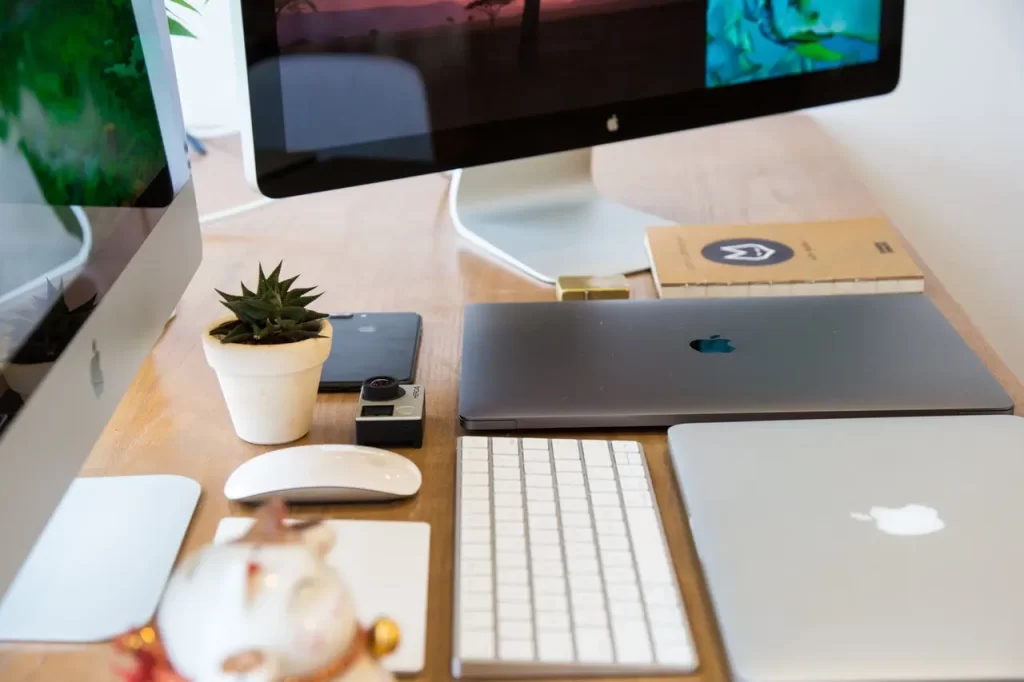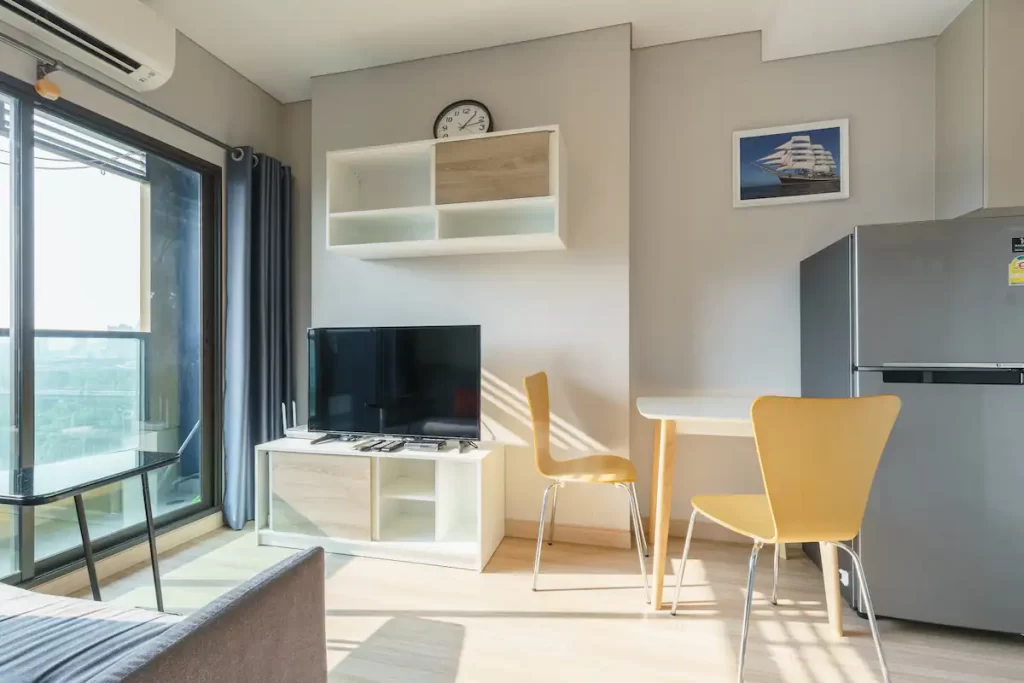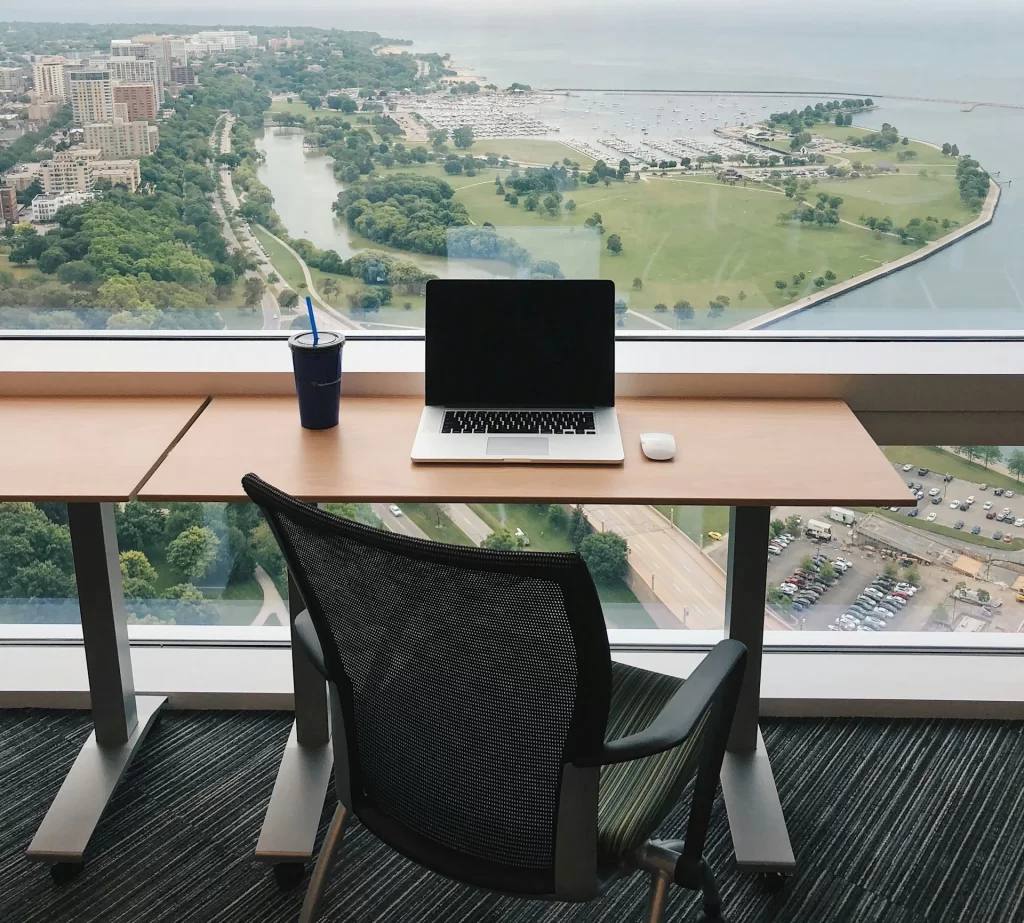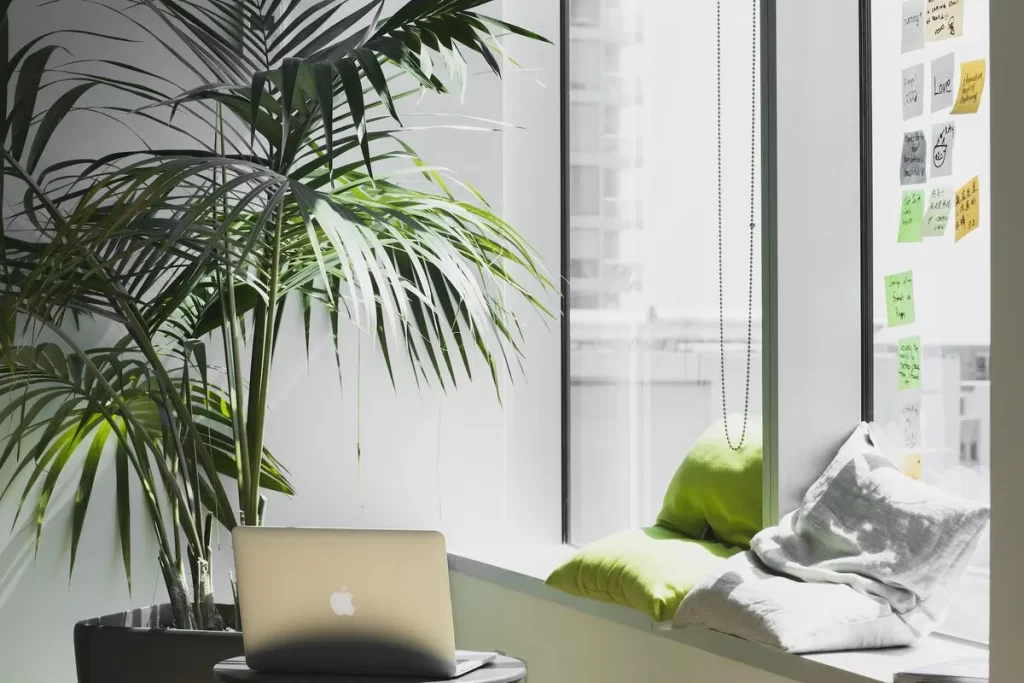
How much space do you need for a home office? Perhaps you work from home but you have only made use of your dining table or couch, instead of a designated workspace. If a simple “home office project” sounds daunting, the good news is that it does not have to take very long. You do not have to spend weeks researching or be a professional builder.
One thing to remember from the get-go: Your home office space is not something you want to compromise on.
As far as possible, you should opt for a dedicated desk space that allows you to be the most productive you can be.
Ideally, you want your home office to be located in a spacious, single-use room. That room – and certainly your desk – should be used for only a singular purpose – productive work. Nothing else. While makeshift desks and bedroom offices can be functional workspaces, they should be your last resort.
Yet, not all of us have the luxury of a spacious, single-use home office.
Let’s consider the various home office sizes that can suit our needs.
Home office sizes: How much space do you really need?
Here is an example of the home office space you need for productive work, in terms of minimum, comfortable, and best home office sizes:
| Home office sizes | Floor area (sq ft) | Floor dimensions (in x in) |
| Minimum size | 21 sq ft | 55 in x 55 in |
| Comfortable size | 60 sq ft | 93 in x 93 in |
| Best size | 100 sq ft | 120 in x 120 in |
The size of your home office would simply depend on the devices you need to get work done.
For most people, a home office is simple – it involves a computer desk, a comfortable chair, lighting, and basic desk accessories. Most likely, this is your scenario.
But if you carry out more complex or specialized tasks, you might need more equipment. This could mean multiple desks, video equipment, and much more furniture or storage.
In terms of how much space you need for productivity:
- The minimum home office size is around 21-30 square feet. It gives you enough space for a mid-sized desk (such as a dual monitor desk). You can locate your office in the corner of your bedroom, living room, or your kitchen or closet.
- A good comfortable home office size is 60-80 square feet. You can fit 2 mid- to large-sized desks which take up 42-60 square feet of floor space. Additionally, you have around 20 square feet of floor space for basic storage and movement (such as walking about and stretching).
- The best home office size is around 100-150 square feet. You can fit 2-3 large-sized desks which take up 60-90 square feet of floor space (such as triple monitor desks and L-shaped desks). Additionally, you have an extra 40-60 square feet for storage, movement, and recreation. This is the size of a spacious room that allows extra non-work functions, such as a meditation space or a couch to relax during downtime.
This article was originally published on unboundist.com. If it is now published on any other site, it was done without permission from the copyright owner.
Minimum home office size

For a basic home office setup, you really just need a few essential tools and furniture – let us find out the space that these essentials take up.
Floor area: 21-30 square feet
Desk to fit: 50″ (W) x 30″ (D) dual monitor desk
Additional functions: None.
Location: Any adequate spare area or corner of an apartment
The minimum size for a home office should be 55 in x 55 in (4.6 ft by 4.6 ft). That is 21 square feet. That is just enough space to fit a mid-sized desk that can hold two monitors while leaving enough free space behind your chair so that you can ease in and out of your chair easily.
| Min. home office size | Min. floor dimensions of home office (“) | Size of desk that can fit (″) |
| 21 sq ft | 55″ x 55″ | 50″ (W) x 30″ (D) |
| 27 sq ft | 70″ x 55″ | 65″ (W) x 30″ (D) |
How exactly do we derive 21 square feet?
Well, it is a general recommendation that is useful for the average person – and by average, I am referring to the office/tech needs of the typical person.
21 square feet (55 in x 55 in) affords you:
- Enough space to fit 2 monitors
- Side-note: we are taking two monitors into account here, as numerous studies suggest people are more productive working with two screens
- And thus, a 50-inch (W) x 30-inch (D) dual monitor desk
- A 5-inch buffer by the sides of your desk, and a 25-inch buffer space behind your chair.
Desk Space Requirements Based on Work Tech
The demands of your work technology determine the minimum desk space needed. The more tech you use, the larger the desk you require.
For screens and monitors:
- 21 sq ft: If you use two monitors, opt for a dual monitor desk (50 inches x 30 inches), and allocate at least 21 square feet for your home office space.
- 27 sq ft: If you use three monitors, opt for a triple monitor desk (65 inches x 30 inches), and ensure at least 27 square feet for your home office space.
With a home office as small as 21-30 square feet, you might be able to fit it into a multi-purpose room, like the living room. However, this can compromise the single-use rule principle.
Be cautious: a small workspace might tempt you to work from your bed or couch, leading to potential distractions. Be wary of forming unhealthy work habits.
Important note: For professionals like us who want to be as location-independent as possible while we work, bear in mind that LESS is better. Having a minimum viable home office enables us to pack our office into our bag, fitting as much as possible while experiencing the least amount of disruption. So while constructing our home office, think about using the LEAST amount of gadgets with the greatest amount of function – and doing so on a low budget if that matters to you!
Comfortable home office size

Comfort is a genuine factor. Perhaps, you just can’t stand working in a small corner or the living room. Maybe, you need ample room space or even a spare room to work in and be totally uninterrupted. You might need multiple desks and storage furniture that extends beyond a small space.
Floor area: 60-80 square feet
Desks to fit: 2 mid- to large-sized desks
Additional functions: Basic movement and additional storage
Locations:
- Within a large bedroom, living room, or a basement
- In an entirely spare standalone room
Here’s the breakdown: A good comfortable home office size is around 60-80 square feet. You can fit 2 mid- to large-sized dual monitor desks – at least 50-inch (W) x 30-inch (D) each – which take up a total of 42-60 square feet of floor space. Additionally, have around 20 square feet of floor space for basic storage and movement (such as walking about and stretching).
Why the extra space for storage?
Likely you store a few things off the desk that you would keep near you, such as an extra chair, certain ergonomic devices, cables, wipes, and so on.
This is completely subjective and some people will not need the extra space. If you are minimalist, you likely wouldn’t.
Why the extra space for buffer and movement?
It is always nice to not be cramped up in a corner. It is nice to not pull out your chair and let it hit your bedframe right behind you – trust me on this. You can easily get in and out of your chair. While not essential, it just feels better to have space between your furniture.
If you are quite the brooding or contemplative worker, you can pace about your space just a little.
Ideal, best home office size

Here is the ideal home office size to go with, if there are few logistical constraints.
Floor area: 100-150 square feet
Desk to fit: 2-3 large-sized desks that fit multiple monitors with additional storage compartments
Additional functions: Ample space for storage, movement, and recreation
Location: Spare standalone room
Here’s the breakdown: The best home office size is around 100-150 square feet. You can fit 2-3 large-sized desks (such as triple monitor desks or L-shaped desks), which take up 60-90 square feet of floor space. Additionally, you have an extra 40-60 square feet for storage, movement, and recreation. This is the size of a spacious room that allows extra non-work functions, such as a meditation space or a couch to relax during downtime.
Why the extra space for storage?
Not all of us require a simple desk setup. Some people have more complex needs. This depends on the nature of their work. You may need space for specialized equipment (like AV equipment) or physical office supplies (like printers and scanners). These take up extra space.
Why the extra space for movement and recreation?
Imagine that you want to not only be productive, but also rest and reflect in your home office. This is not ideal in other distraction-ridden rooms like the living room or bedroom. What happens when you go into these rooms? You could end up lying on your couch/bed and ‘accidentally’ let 5, 15, 30, 60 minutes go by when you did not intend to.
Instead, you want an ideal home office with comfy sofas, plants, and perhaps a meditative corner. Perhaps, a corner with a vision board to look at.
What about having a shared home office space?
If two people are sharing the same space, it is important to keep the space organized and have different zones for two people.
The best size for a home office for two persons is at least 100 square feet. For two people, 100 square feet of space allows 2-3 desks. Going beyond 100 square feet is better since it gives plenty of storage space, as well as personal breathing space. A spacious workspace makes a shared home office possible.
Summary
Using the information in this article, you can get started immediately with planning and making a few measurements.
What are your work needs? How large must your desk be and how much storage space do you need?
At a minimum, free up 21 square feet of space, and invest in a small desk and comfortable office chair.
Finally, you can then decide on where exactly you want to locate your home office. Which room in your apartment is ideal? Can you really be productive working in a kitchen or bedroom office like some people? What are your options if you do not have enough space or a spare room?
Head on to the next article in this series to find out.